Why is the bottomless handle so popular? Does it really make coffee different?
There's something new in the coffee circle that's not only a good barista training tool, but also beautiful in appearance, known as the "bottomless handle." Its bottom is removed or truncated, making the entire bottom visible and completely exposed to the voyeur. This will make it easier for baristas to see the bottom of the filter bowl during training and see how coffee drips from the coffee machine into the coffee cup.
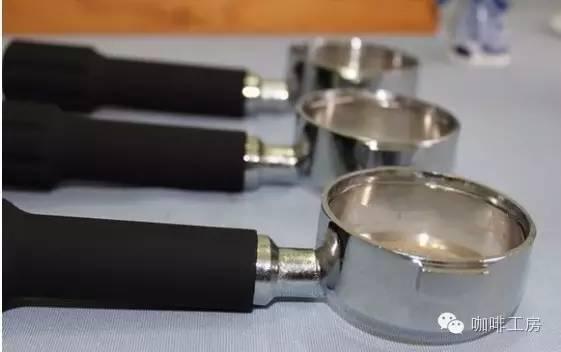
Bottomless handle and standard handle
At first glance, the "bottomless handle" is a new concept. Can it really help aspiring baristas train better?
The barista's dream goal is to make coffee that not only looks good, but also tastes good. Perfect extraction is a hodgepodge of perfect grinding, loading, and pressing, not to mention baking, water temperature, air pressure, and pH of the water.
Ideally, the coffee powder thickness should be the same, when the powder is pressed, the compact in all directions should also be the same. Of course, absolute perfection is impossible, and the "bottomless handle" can help us judge: flow column, flow rate, color, flow column stripes...
Bottomless handles are a very popular espresso machine assembly. Why is it so popular? Does it really make coffee different? Next, we'll see what's so mysterious about the bottomless handle.
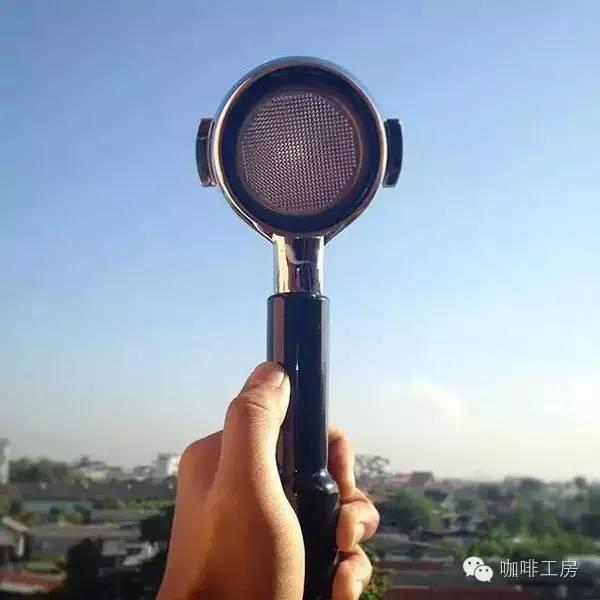
What is a bottomless handle?
Simply put, a bottomless handle is a handle with the nozzle and bottom removed, leaving the bottom of the bowl exposed. With a bottomless handle, espresso can flow directly from the powder bowl into the coffee cup.
If you look at the specs sheet for an espresso machine, it often mentions that a brew head can make double espresso at once, and a handle with a nozzle can divide double espresso into two cups.
Within the specialty coffee industry, there are usually very few people who drink single espresso, so some baristas decided to try using bottomless handles.
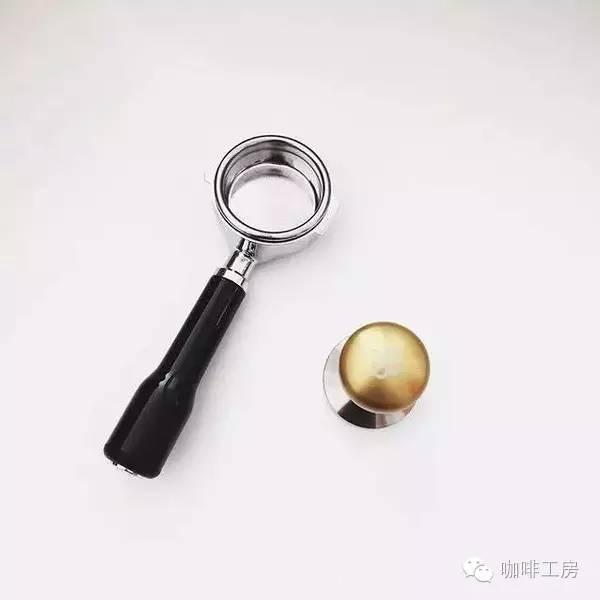
Why use a bottomless handle?
There are many reasons to support the use of bottomless handles. Here we list all the relevant reasons.
1. quality control checks
The most commonly cited reason for using a bottomless handle is that it allows us to judge the uniformity of the extraction, thus helping to make a tastier and more consistent espresso. Traditional handle nozzles produce false spray or drainage, but with a bottomless handle, all this is clearly visible. In theory, the bottomless handle could help the barista judge the quality of the extract. In this way, they can focus on the extraction method research, by adjusting the distribution, grinding, or crushing aspects to improve the quality of the extraction.
When using a bottomless handle, seeing multiple streams of water quickly merge into a beautiful tibetan stripe at the bottom of the handle does not mean that it is better than a slow integration of tibetan stripes. Keep in mind that we don't see the water directly through the cake, we see the coffee liquid through the powder bowl, so drainage doesn't always represent uneven extraction.
I've been using bottomless handles for years and have found that some of the water looks strange but tastes good. Sometimes when the same coffee extract produces a more beautiful stream, it is found that the taste is not as good as those strange streams. Therefore, I do not think there is always a strong correlation between the quality of the flow and the quality of the extraction.
This is not to say that poor quality water is not a bad sign. Only when you taste it will you know how it tastes. Bottomless handles can reveal some undesirable qualities. If spraying occurs during extraction, it indicates that the coffee beans are not fresh, unevenly ground or unevenly packed.
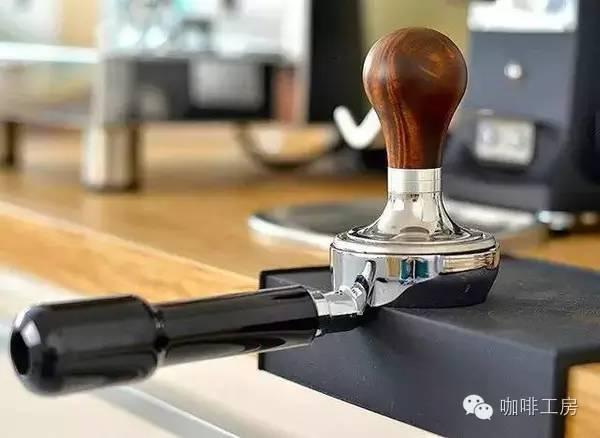
2. Higher onset point
Another advantage of a bottomless handle is that it increases the height of the current. It's easier to use a takeaway cup because it's taller. A high onset point may cause espresso to bubble. Just attach a vertical tap to the cup and the worrying bubbles will disappear before serving.
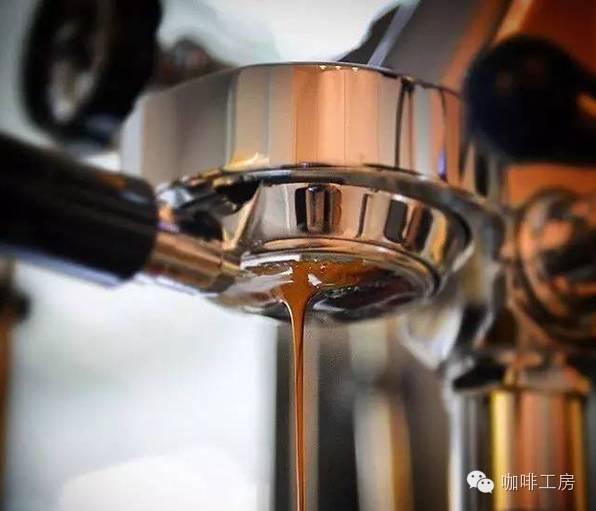
3. improve grease
Some would argue that bottomless handles produce more and better grease. This may be due to insufficient surface area for espresso to flow. Because the grease foam doesn't have the same areas to attach to, it cools slower, resulting in thicker and more foam. I don't believe that more grease means better extraction, and I'm not sure if the bottomless handle will extract more grease.
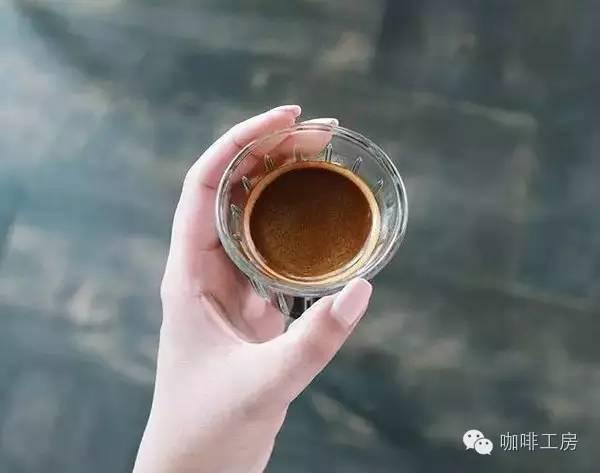
4. An aesthetic pleasure.
Espresso extraction process is very beautiful, use the bottomless handle can intuitively enjoy this beautiful picture, this is the bottom handle does not have the function. With the bottomless handle, you'll soon be mesmerized by the sparkling golden-brown water flowing through the espresso. I think that's probably enough reason for people to opt for a bottomless handle.
What are the disadvantages of the bottomless handle?
1. The increased height of the water flow makes it easier for the coffee to splash and stain the coffee machine, but this is almost offset by the ease of cleaning the bottomless handle itself.
2. Bottomless handles don't divide a double espresso into two cups, and if a customer orders a single espresso, they need to weigh out the single serving from the double.
Bottomless handles have a few drawbacks, but it's safe to say these are minor. Bottomless handles have advantages and disadvantages, if you are interested in it, then you may wish to buy a try.
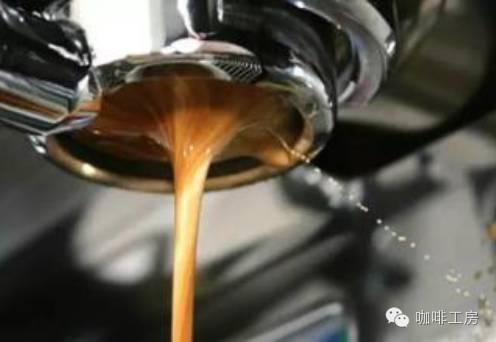
Extraction of a cup of good concentration, the need for stable pressure, the right water temperature, the right degree of grinding, the right amount of powder and so on. What does that mean? For example: WBC regulations, 1 part of Espresso is 1oz (25~35ml, including Crema), brewed at a temperature between 90.5~96 degrees Celsius, brewing pressure 8.5 ~ 9.5 bar, extraction time 20~30 seconds (no mandatory regulations). In order to achieve the above requirements, a good espresso machine and grinder is essential. Often a lot of novice extraction is not good concentration, because at first do not understand, want to get started to play, the result bought a relatively poor so-called 15bar pressure Italian coffee machine and can not accurately adjust the scale of the bean grinder or only suitable for grinding coarse powder single bean grinder. In this appeal to novices, do not worry about starting Italian coffee equipment, must do your homework and then start, otherwise it is easy to spend money, but also do not make good coffee!
The following procedure may be cumbersome, and some of the steps are not necessary, but are for reference only. The right amount of powder is needed. Strictly speaking, the difference of 0.5 grams will change the flow rate, so the amount of powder should be controlled within 0.5 grams as much as possible, and it is best to reach 0.3 grams. Weigh the beans with an electronic scale, put them into the bean grinder, and then grind them out. This is inaccurate (unless it is a bean grinder similar to HG-ONE), because the bean grinder will "eat" the powder, or "spit out" the previous residual powder, so be sure to weigh the weight of the flour in the flour bowl. The beans were weighed on an electronic scale as a demonstration.
The right grind is very important, all other variables being equal, the scale determines the speed of espresso flow, and we often adjust the flow rate of different recipes of espresso beans by adjusting the scale. Why is the Italian grinder so important? Because the amount of powder, extraction time and pressure can be fixed, we can adjust the grinding scale to achieve the flow rate we require, and then slowly fine-tune other variables in order to find the taste we like. Single bean grinder, ordinary hand-operated bean grinder, because the adjustment range of one scale is too large to meet the requirements of fine adjustment, so it is not suitable for making Italian coffee, even unable to make Italian coffee.
Make concentrated at home, generally not a few cups a day, in order not to affect the extraction of the next cup of coffee, the bean grinder must be cleaned, including the powder path of the bean grinder, need to be cleaned with a brush or air blowing, vacuum cleaner, etc. If you have residual powder in the grinder, it will definitely affect the flow rate of the next cup of coffee. The stale powder will also make the taste worse. Of course, the millstone does not have to be disassembled and cleaned every time. It is recommended to clean the millstone once every 1~3 months.
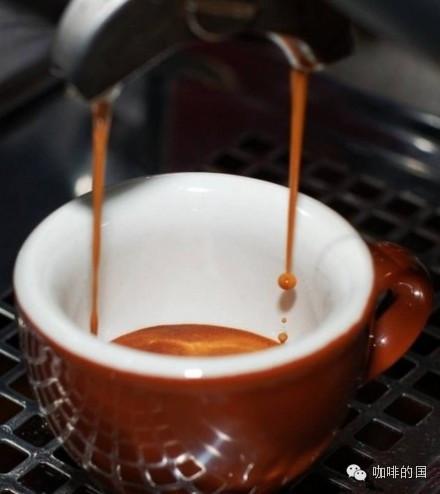
As mentioned above, the amount of powder must be weighed into the powder bowl to be accurate, as shown below. If the powder agglomeration is more serious, be sure to stir open, you can use a toothpick. Severe caking combined with poor powder pressing at the back, channels are likely to appear. The so-called channel, simply said that in the extraction process, the powder cake has one or N small holes or cracks, at this time high-pressure water will flow down quickly from the channel, other places of the powder cake are not completely extracted, eventually leading to partial extraction of the channel Excessive, other places insufficient extraction. If you look through the bottomless handle, you may find that the flow rate is fast, the color is quickly lightened, and there are spray phenomena.
"Handle" is the filter handle we use to extract Espresso.
You're probably wondering if there's any cool coffee artifact to improve your craft. Of course, there are ubiquitous powder presses and sexy electronic scales that measure the intensity of powder pressing.
The "channeling effect" makes it easier for water to flow through cracks and loose spots in the cake, which can cause uneven coffee extraction and a bad cup of Espresso. Common causes are uneven powder pressing or too much powder (excessive coffee powder).
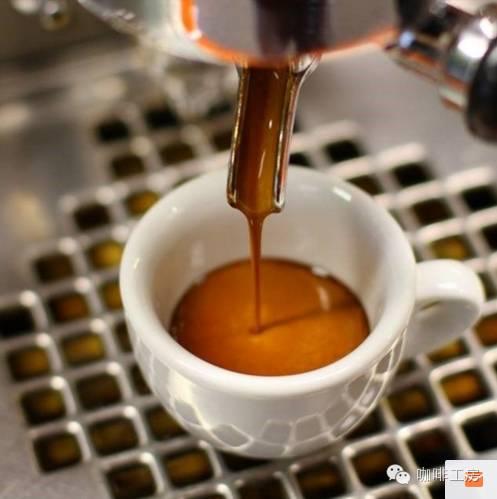
Espresso extracted from one side
When coffee is extracted, it may appear as a whitish column, giving it an unpleasant taste. It usually occurs at the end of the extraction process and is not present during extraction.
The whitish Espresso is being extracted.
The tiger pattern of the flow column is a good sign if it is uniform, as long as the color of the stripe is moderately dark and the flow rate is not too fast or too slow. Most people think a 2-ounce cup of double concentrate should last between 22 and 30 seconds, but let the taste speak for itself.
Espresso spatter, whitish color
Bottomless handles allow the barista to clearly see everything under the coffee maker. The effect of the "channeling effect" can be judged by the "spray column" and the "intermittent column" from which coffee is sprayed at different angles.
Espresso with Multiple Streams
Multiple small columns tilting downward may also be affected by "channel effects", usually only one unified column. And assuming your coffee machine is perfectly horizontal, if this uniform column is skewed to one side, it could be one side affected by a "channeling effect."
A perfect extraction is one that does not appear to be mentioned in these imaginations. Of course, a cup of Espresso that looks good may indicate that the barista is good, but no matter how good the espresso looks, it must taste good in the end!
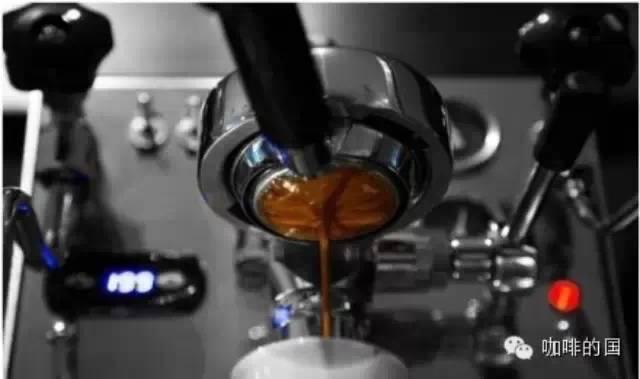
This coffee tastes bad. Can you find anything wrong with it?
Regarding beans, many novices buy very cheap beans in order to practice. In fact, this does not help you improve your extraction technology, because the coffee extracted is not good to drink, and it is impossible to judge whether it is a machine problem, a technical problem of roasting, or a bean problem. So, a packet of similar beans, at least you can know that this cup of coffee is "bad", not because of the beans, and then look for other reasons, try to narrow down the scope.
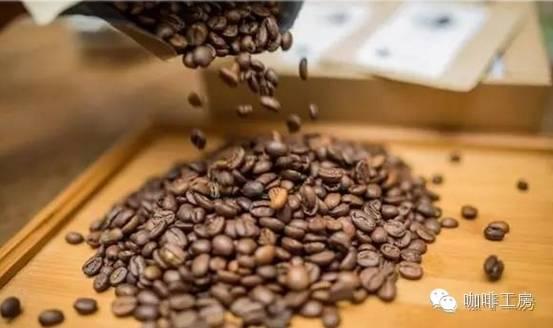
Important Notice :
前街咖啡 FrontStreet Coffee has moved to new addredd:
FrontStreet Coffee Address: 315,Donghua East Road,GuangZhou
Tel:020 38364473
- Prev
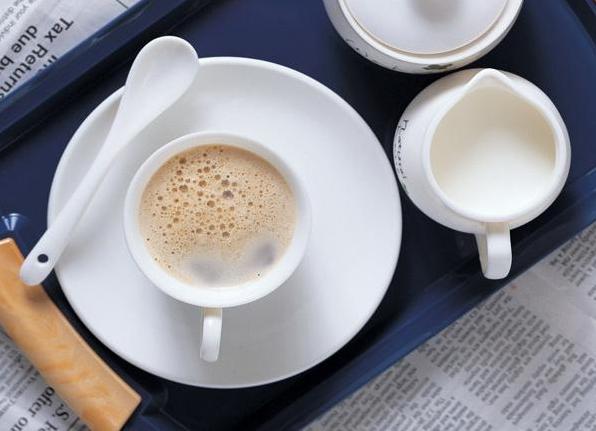
White Coffee History Source--The difference between white coffee and black coffee Malaysia's best white coffee is
Today we are going to discuss the historical origin of white coffee and the difference between white coffee and black coffee in Malaysia. I believe that people who like coffee know what white coffee is, old street white coffee, I believe everyone is familiar with it! The founder of Malaysian coffee culture, the Chinese have also become one of the main consumer groups of white coffee. Coffee over the years.
- Next
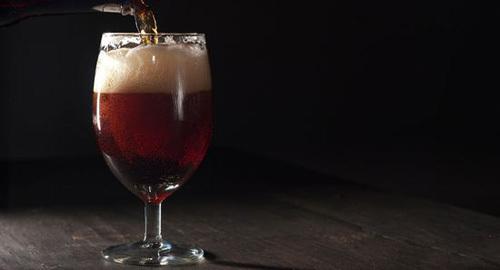
It turns out that these can also be mixed with coffee, novel coffee that you don't know.
Coffee in addition to we often see mocha, cappuccino. Do you know these new varieties of coffee? Beer coffee begins in a coffee shop. Guests who order hot coffee want to drink it when they see a cold beer from a friend next to them, so they add each other's beer to their own coffee and get the name, which is accidentally combined into a cold and hot coffee. Practice: baking in injection
Related
- Beginners will see the "Coffee pull flower" guide!
- What is the difference between ice blog purified milk and ordinary milk coffee?
- Why is the Philippines the largest producer of crops in Liberia?
- For coffee extraction, should the fine powder be retained?
- How does extracted espresso fill pressed powder? How much strength does it take to press the powder?
- How to make jasmine cold extract coffee? Is the jasmine + latte good?
- Will this little toy really make the coffee taste better? How does Lily Drip affect coffee extraction?
- Will the action of slapping the filter cup also affect coffee extraction?
- What's the difference between powder-to-water ratio and powder-to-liquid ratio?
- What is the Ethiopian local species? What does it have to do with Heirloom native species?

